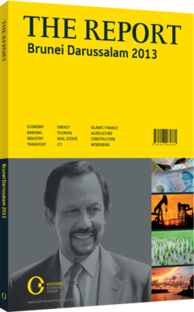Sustainable developments: A master plan for redevelopment could bring significant changes to
Plans unveiled in 2010 aim to transform Brunei Darussalam’s capital, Bandar Seri Begawan (BSB), from a sleepy riverside town to a modern city that serves as a centre for key service industries. Government officials laid the groundwork for the city’s evolution in 2007, when the sultan approved the expansion of the city from 1287 ha to 10,036 ha, incorporating the suburbs of Gadong, Kianggeh, Kilanas, Berakas A, Berakas B and Kota Batu into the municipality. Now the goal is to tie the sprawling kampongs, or villages, into an interconnected, highly-developed metropolis that supports both commercial and residential development.
LAYING THE PLANS: Although the government has sought to promote community feedback through “visioning workshops” and public forums, most of the details of the development project come from the Bandar Seri Begawan Master Plan, commissioned from HOK International Asia Pacific, and published in 2010. The study envisions a significant expansion of BSB’s population, from 100,000 to between 257,000 and 302,000, while the number of workers either living in or commuting to the city is expected to rise from 102,000 to 217,000 (in the higher-growth scenario). This will necessitate 144 ha of office space, along with 58 ha of retail space, 81 ha of hospitality area, and 1146 ha of residential land. The master plan calls for the zoning of Class A office space in the downtown area, and increased residential development in areas where retail, office or government services now dominate.
DOWN TO BUSINESS: The plan gives specific recommendations for development within the key nodes of the city. In the downtown/central business district, HOK’s planners identified dozens of government-owned buildings and land areas that could be redeveloped, relocated or adapted and put to better use. The study also pinpoints a number of plots of either governmentowned or private land with redevelopment potential, as well as open or unused sites that could be utilised. It suggests strategies such as presenting the Sultanate as an international business district, with the historic Jalan Sultan becoming Royal Finance Street, and bringing high-density residential zones into downtown.
Most prominent, however, would be the riverfront eco-corridor that highlights Sungai Kedayan and features riverfront commercial and retail real estate served by expansive walkways. The focus on the river would be accompanied by extensive environmental rehabilitation efforts. This is in line with the ecological focus of the plan as a whole, which promotes strategies such as water treatment via wetlands, waterway stabilisation and urban farming. If such recommendations are taken up in the capital, they could spur a shift in environmental practices across the country.
FURTHER AFIELD: The plan’s goals for the city outside of the downtown area are less ambitious, but still notable. It highlights the misuse of the river Sungai Menglait and recommends redeveloping the waterfront and making this area more walkable. Dense housing and new hotel space is included in this plan. The study also proposes a civic centre concept for the city’s government district – a proposal that consolidates existing offices and improves transportation options.
Finally, it suggests utilising available land near the airport for office development.
The plan presents an ambitious vision for BSB that dovetails with the Sultanate’s goals of economic diversification. Its success is in no way assured – at last report the BSB Municipal Board, under the Ministry of Home Affairs, was still identifying land that could be redeveloped under the scheme. The massive complexities of implementing such a far-reaching public-private partnership, especially in Brunei Darussalam, could result in the project being downscaled, indefinitely delayed, or scrapped entirely. Still, by making the capital an attractive area for businesses, shoppers, and tourists, the government is trying to lay the groundwork for growth in sustainable service industries. If the champions of the master plan can surmount the inevitable bureaucrat hurdles, it should yield years of strong growth in residential and commercial real estate.
You have reached the limit of premium articles you can view for free.
Choose from the options below to purchase print or digital editions of our Reports. You can also purchase a website subscription giving you unlimited access to all of our Reports online for 12 months.
If you have already purchased this Report or have a website subscription, please login to continue.

